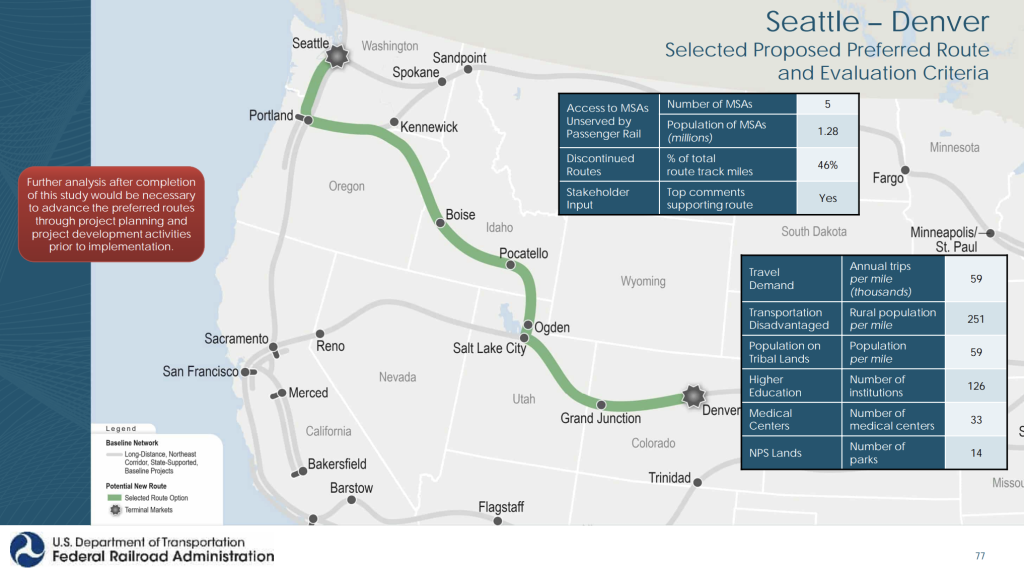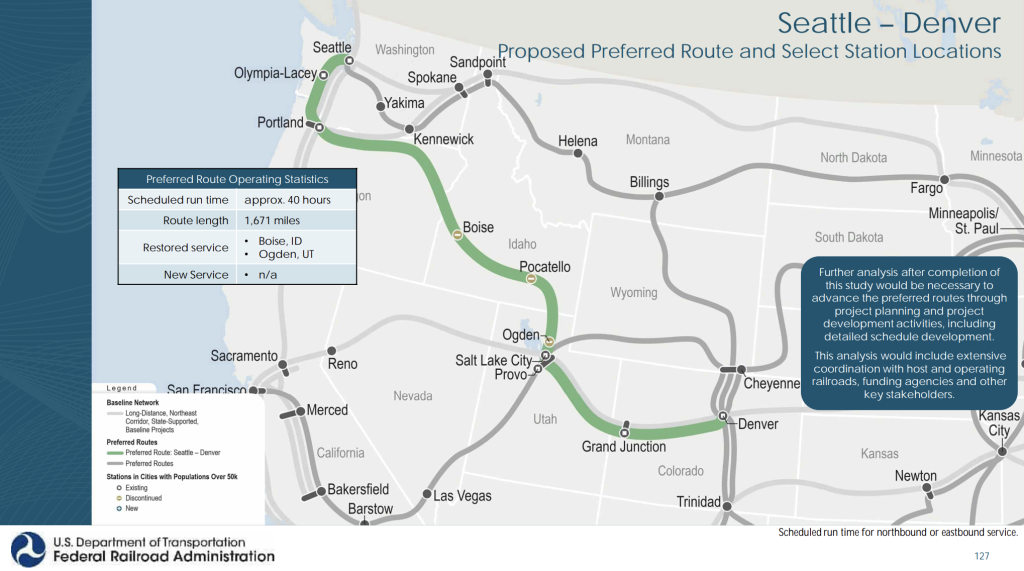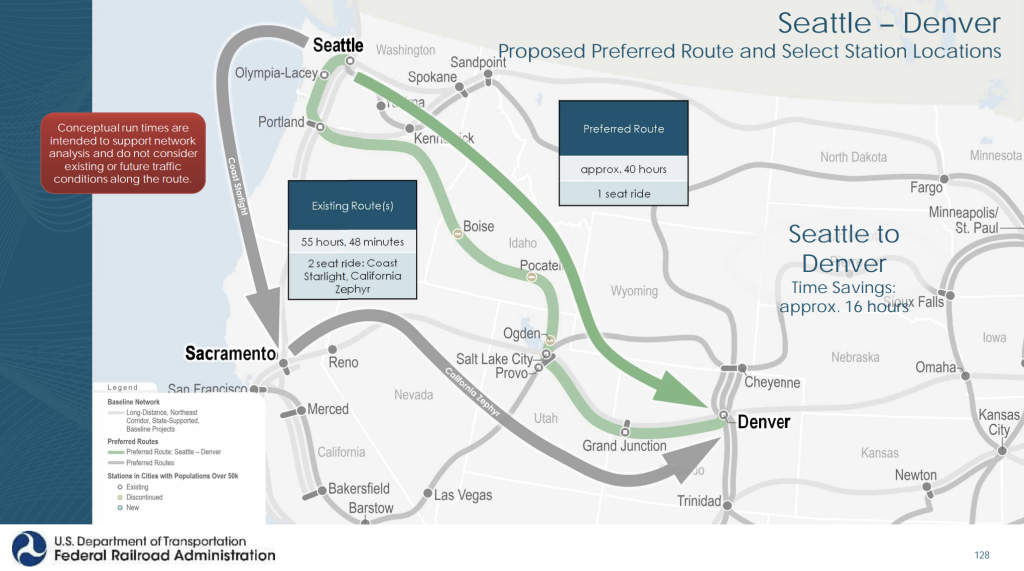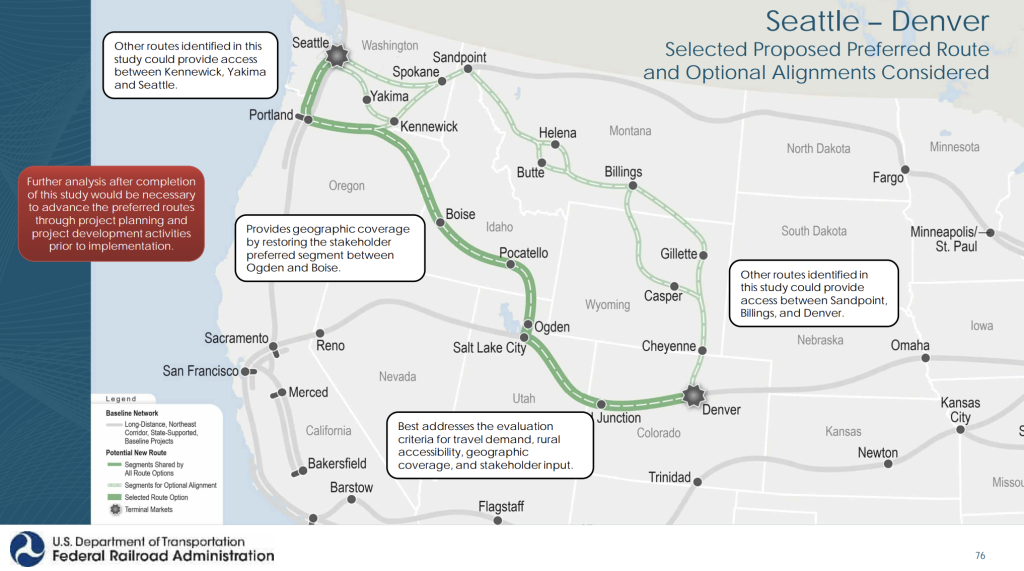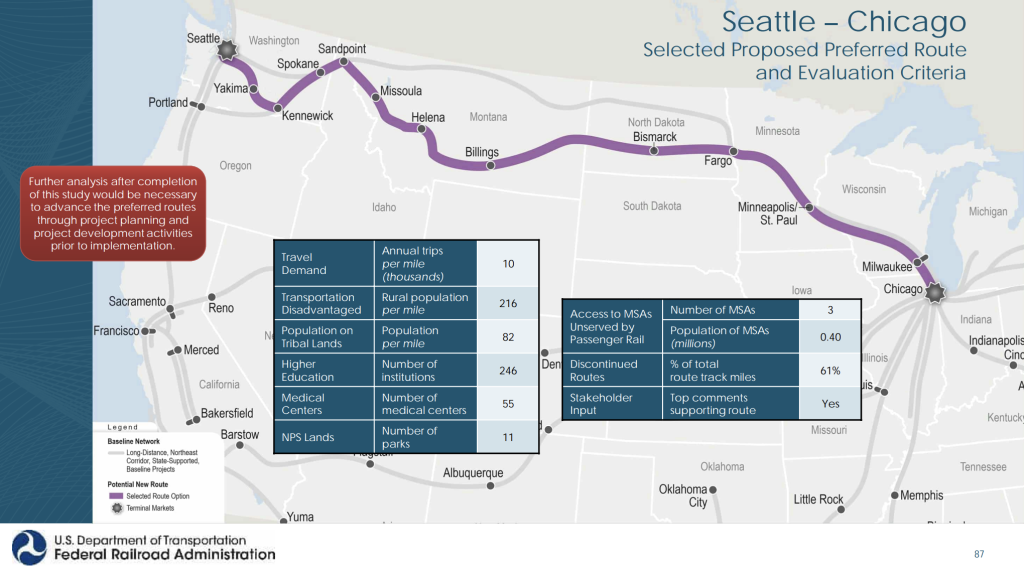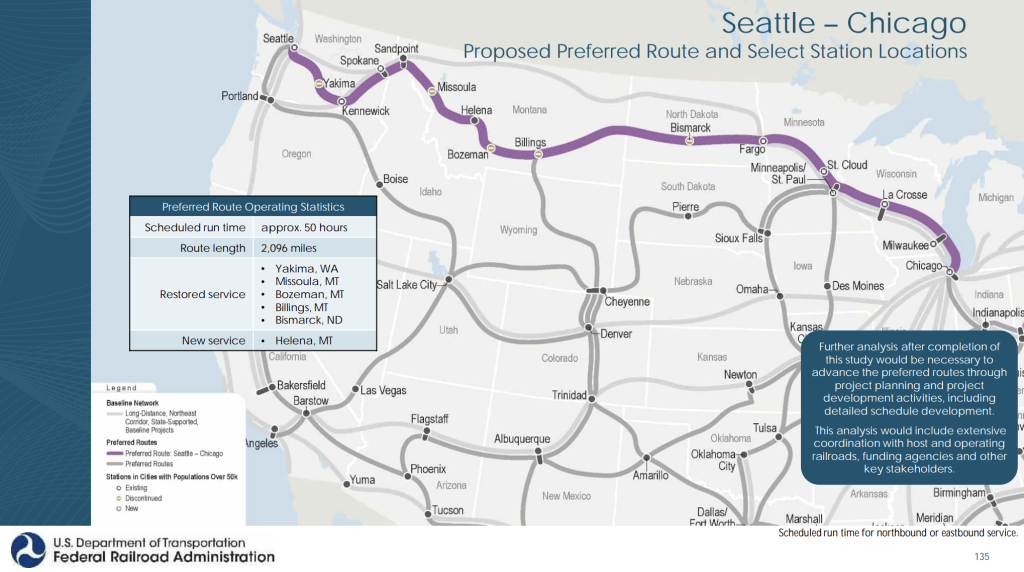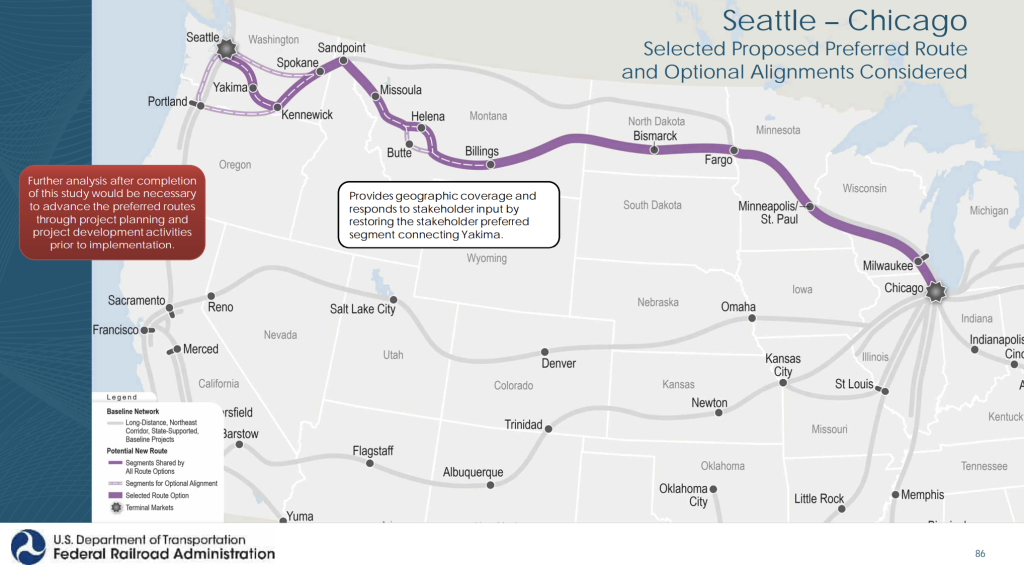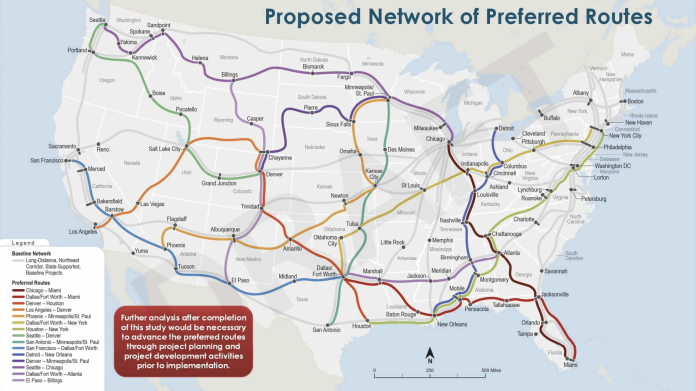
The Federal Railroad Administration (FRA) has unveiled its preferred Amtrak long-distance expansion plan. The Pacific Northwest could see two new routes under the preferred plan, serving destinations without any train service at all, such as Yakima, Boise, Missoula, and Pocatello. Both routes would provide daily service from Seattle with one running to Denver and another running to Chicago on a modified alignment from Amtrak’s Empire Builder.
Biden infrastructure bill could double Amtrak mileage
As a result of Congress passing President Biden’s infrastructure bill, the Infrastructure Investment and Jobs Act of 2021, the FRA has been directed to carry out a study evaluating expansion of daily intercity passenger rail service. Specifically, the FRA is tasked with evaluating restoration of daily service on any previously discontinued Amtrak long-distance routes and any Amtrak long-distance routes that operate less than daily.
The FRA is also empowered to evaluate new Amtrak long-distance service with a particular emphasis on any routes that were in service in April of 1971 by private railroads, prior to the hand-off of national intercity passenger service to Amtrak in May of that year.
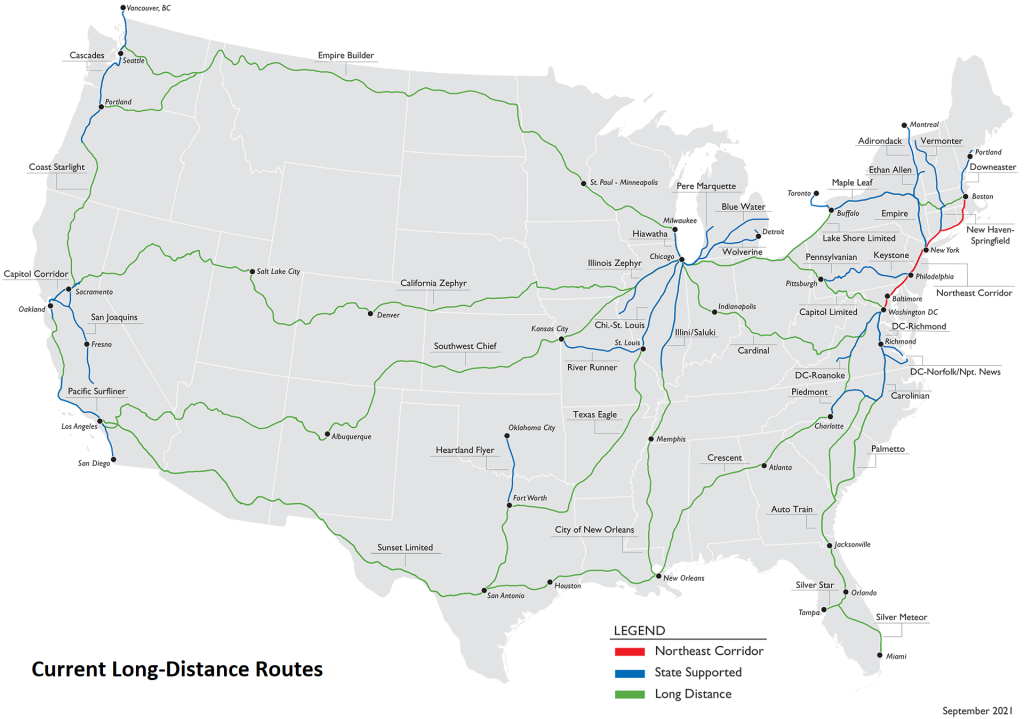
Consequently, the FRA study’s preferred plan could, in time, add 15 more Amtrak long-distance routes to the national map. Doing so would begin to build out a denser national passenger rail network with new hubs in places like Denver, Cheyenne, Albuquerque, Dallas/Fort Worth, Mobile, Salt Lake City, and many more.
According to the FRA’s analysis, the preferred Amtrak long-distance expansion would register some big numbers by:
- Enhancing access to 82 more medical centers, 600 more higher education institutions, and 12 more national park and recreation areas;
- Serving another 102 stations in small communities for a total of 212 stations;
- Serving another 114 stations in large communities for a total of 329 stations;
- Providing access to service for another 45 million Americans for a total of 292 million (current baseline is 247 million) — this particularly impactful to rural areas; and
- More than doubling route miles from 21,900 miles to 45,100 miles.
Preferred long-distance routes proposed in the PNW
Both of the proposed routes in the Pacific Northwest would restore service that previously existed in the Amtrak network.
The Seattle-Denver route would essentially restore much of the Amtrak Pioneer service that operated between 1977 and 1997. The preferred route would have major stops in Portland, Boise, Pocatello, Ogden, Salt Lake City, and Grand Junction on a 1,671 mile corridor. Travel time is estimated to be around 40 hours end to end and the Pioneer would serve five metropolitan statistical areas (with about 1.28 million residents) without any Amtrak service.
Additionally, the Amtrak North Coast Hiawatha service would be restored between Seattle and Chicago on a 2,096 mile corridor. The service was a short-lived route operated by Amtrak between 1971 and 1979. Last year, the Big Sky Passenger Rail Authority won support for federal funding to plan restoration of the North Coast Hiawatha, so the fact that the service made the cut in the FRA’s plan is not exactly surprising.
The preferred alignment would share some segments with Empire Builder, but would provide a lot of unique service in parts of Washington, Montana, and North Dakota. In fact, the Montana segment would end up serving the biggest population centers in the state. Within the Pacific Northwest, the North Coast Hiawatha would reactivate stations in Yakima and Missoula and provide additional service to existing stations in Kennewick, Spokane, and Sandpoint. It would also be a new direct rail connection for Seattle and the Tri-Cities, which currently is only served with the southern branch of the Empire Builder, which terminates in Portland.
Total end-to-end travel time on the service would be about 50 hours and the North Coast Hiawatha would serve three metropolitan statistical areas (with about 400,000 residents) currently lacking any Amtrak service.
Several years ago, All Aboard Washington, a statewide rail advocacy organization, pushed for and successfully won support for a study to evaluate restoration of intercity passenger rail using Stampede Pass to reach many communities in Eastern Washington, such as Cle Elum, Ellensburg, and Toppenish. That corridor overlaps with the preferred North Coast Hiawatha routing, so if the North Coast Hiawatha is restored it could partially realize goals of the study.
The Stampede Pass study found that standalone east-west service could generate substantial ridership, particularly east of the Cascades and justify at least two daily roundtrips. The main sticking point is speeds through Stampede Pass itself which means journey times could be lengthy at nearly three hours between Auburn and Cle Elum. But perhaps federal interest in the corridor could lead to speed and reliability improvements to trim down travel times.
A precursor to a bigger nationwide rail network
The work that the FRA is doing is important in readying Amtrak long-distance expansion. The study will ultimately help proposed routes move through the required systems planning and project planning stages of the FRA’s multi-step process to plan, design, and implement passenger rail projects.
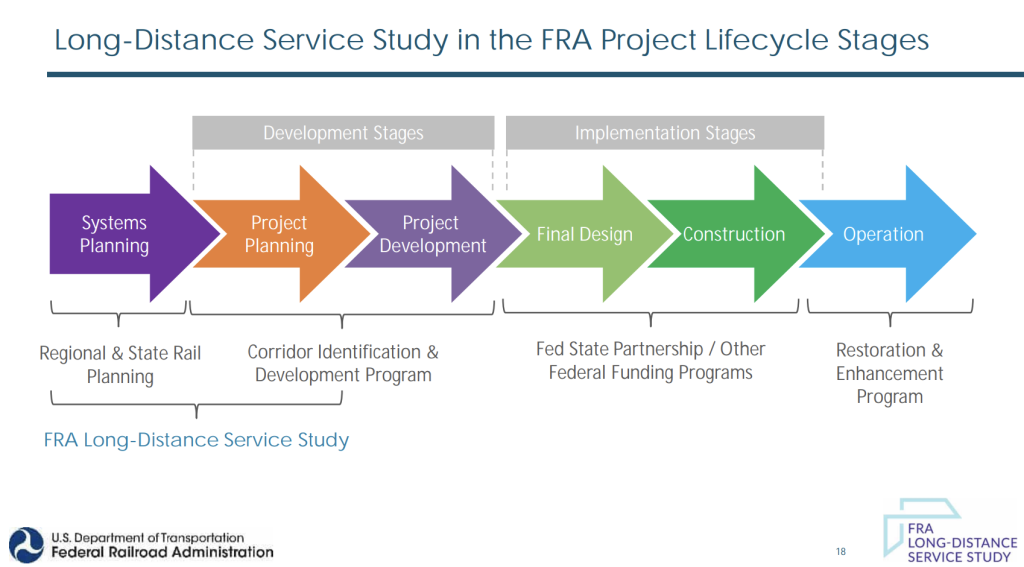
Moving the routes fully through the Corridor Identification and Development Program stage will place them into the FRA’s project pipeline and make them eligible for federal funding programs. That will be important in improving rail infrastructure, constructing and reactivating stations, and delivering other physical assets to operate long-distance routes.
Work on the study is expected to continue through this year and into part of next year. But key details on implementation schedules of preferred routes, costs and benefits of them, and recommended actions should come sometime this spring.
Stephen is a professional urban planner in Puget Sound with a passion for sustainable, livable, and diverse cities. He is especially interested in how policies, regulations, and programs can promote positive outcomes for communities. With stints in great cities like Bellingham and Cork, Stephen currently lives in Seattle. He primarily covers land use and transportation issues and has been with The Urbanist since 2014.

